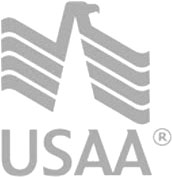With college tuition costs constantly on the rise, it’s vital that you consider all of the options. Chances are that, even if you save up, and even if you qualify for some time of scholarship or grant, there will still be a funding gap. The way to close that gap is often with the help of student loans.
But how can you get the best student loan rates? If you’ve been following the news, you probably know that student loan rates narrowly avoided an increase earlier this year. However, in the future there might be higher rates coming, since rates are now pegged to the market (albeit capped). Here is how to get the best student loan rates:
If You Already Have Student Loans
If you already have student loans, now is the time to consolidate them. First of all, it’s difficult to keep track of multiple student loan payments, and, even with federal loans, you might be paying different interest rates on some of your loans. Consolidate your federal loans, and they are subject to one rate, and one payment. Plus, consolidating insures you against future interest rate rises.
You do need to be careful when you consolidate, though. Your term will be stretched out, and you might end up paying more in the long run. You can prepay, though, if you want to avoid the issues that come with a longer term. The important thing is that you have locked in your interest rate, and you don’t have to worry about it rising.
If You Are Looking For Student Loans
Students looking for help paying for college can get the best student loan rates by first applying for federal loans. Even though federal student loan rates have gone up in the last few years, and even though they are likely to rise more in the future, these rates are still likely to be the lowest possible.
In order to get first chance at federal student loans, fill out the Free Application for Federal Student Aid (FAFSA) as early as possible. You need the previous year’s tax information, so as soon as you know your information, fill out a form. Most of the aid offered is on a first come, first serve basis, so you have a better chance if you turn in your form early.
After you find out whether or not you receive FAFSA funds, figure out if you’re still short. At this point, it makes sense to look at private student loans. However, it makes sense to exhaust other avenues first, since private student loans often have rates that are 2% to 4% higher than federal rates.
Remember that you still have to have good credit to qualify for private student loans, so you need to make sure that your credit is in good shape. Otherwise, you might be forced to get regular loans to close the college funding gap, and those interest rates can be much higher.





















